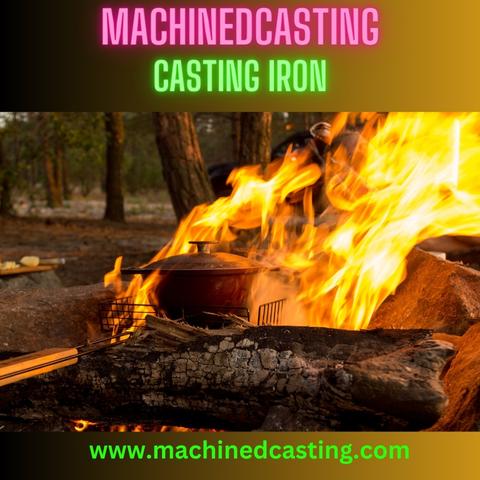Casting iron is a centuries-old technique that has been employed to create a wide array of metal objects, from ornate sculptures to functional tools and machinery components. This comprehensive guide will take you through the fascinating world of casting iron, covering the basics, materials, equipment, and the step-by-step process of creating cast iron pieces.
Chapter 1: Understanding Casting Iron
1.1 What is Casting Iron? Casting iron is a metalworking process where molten iron is poured into a mold, allowing it to cool and solidify, taking on the desired shape. It has a rich history and is known for its durability and versatility.
1.2 Types of Cast Iron Learn about the different types of cast iron, including gray iron, white iron, malleable iron, ductile iron, and more. Each type has its unique properties and applications.
Chapter 2: Materials and Tools
2.1 Crucial Materials Explore the key materials used in iron casting, such as iron, sand, and additives. Understand how the choice of materials can influence the final product.
2.2 Essential Tools Discover the tools and equipment required for iron casting, including crucibles, molds, tongs, and furnaces. Learn how to select the right tools for your projects.
Chapter 3: The Iron Casting Process
3.1 Pattern Creation Learn how to create patterns, which serve as the templates for your cast iron piece. Explore various pattern-making techniques and materials.
3.2 Preparing the Mold Delve into mold preparation, covering green sand molds, shell molds, and other mold types. This step is essential for achieving the desired form and finish.
3.3 Melting Iron Understand the process of melting iron, including the choice of fuels, melting temperatures, and safety precautions. This is a crucial step in the casting process.
3.4 Pouring and Solidifying Explore the actual casting process. Learn how to safely pour the molten iron into the mold and how to ensure it solidifies correctly.
3.5 Cooling and Removal Discover the importance of proper cooling and how to safely remove the cast iron piece from the mold without damaging it.
Chapter 4: Finishing and Post-Processing
4.1 Cleaning and Grinding Learn techniques for cleaning and grinding the cast iron piece to remove any imperfections or excess material.
4.2 Heat Treatment Understand the importance of heat treatment for cast iron, which can improve its strength and durability.
4.3 Surface Finishing Explore various methods for giving your cast iron piece the desired finish, whether it’s a polished look or a rustic texture.
Chapter 5: Advanced Techniques and Projects
5.1 Advanced Casting Techniques For those looking to expand their skills, this section covers advanced techniques like lost-wax casting and investment casting.
5.2 Sample Projects Discover a selection of practical cast iron projects, from creating decorative pieces to functional tools.
Chapter 6: Safety and Precautions
6.1 Safety Guidelines Learn about essential safety precautions to ensure a safe and enjoyable casting iron experience.
6.2 Environmental Considerations Understand the environmental impact of casting iron and how to adopt eco-friendly practices.
Conclusion: Casting iron is a captivating blend of science, art, and craftsmanship. With this comprehensive guide, you’re well-equipped to embark on your casting iron journey, whether you’re a beginner or looking to advance your skills. Remember to prioritize safety, experiment, and enjoy the rewarding process of creating unique cast iron pieces.


